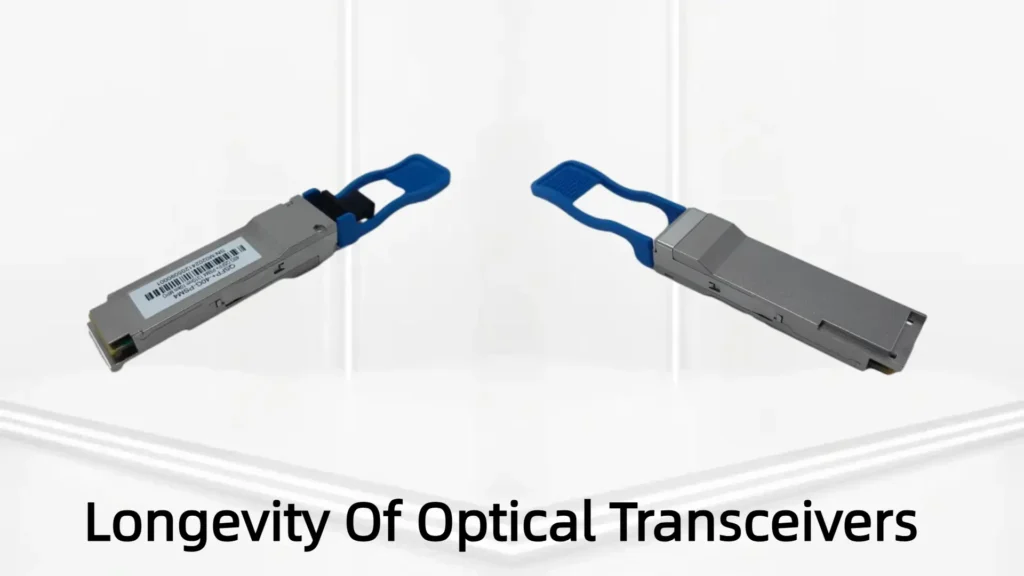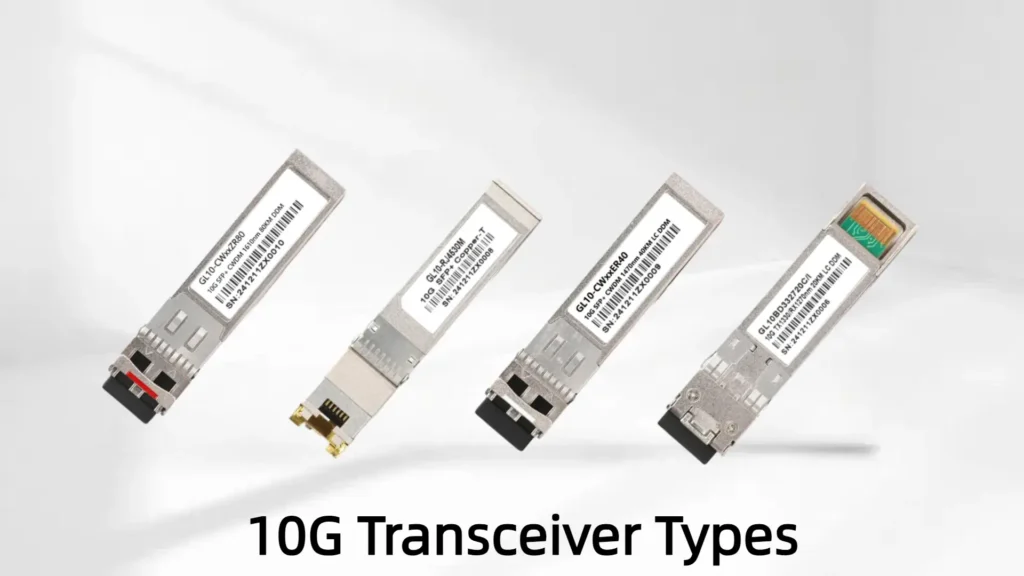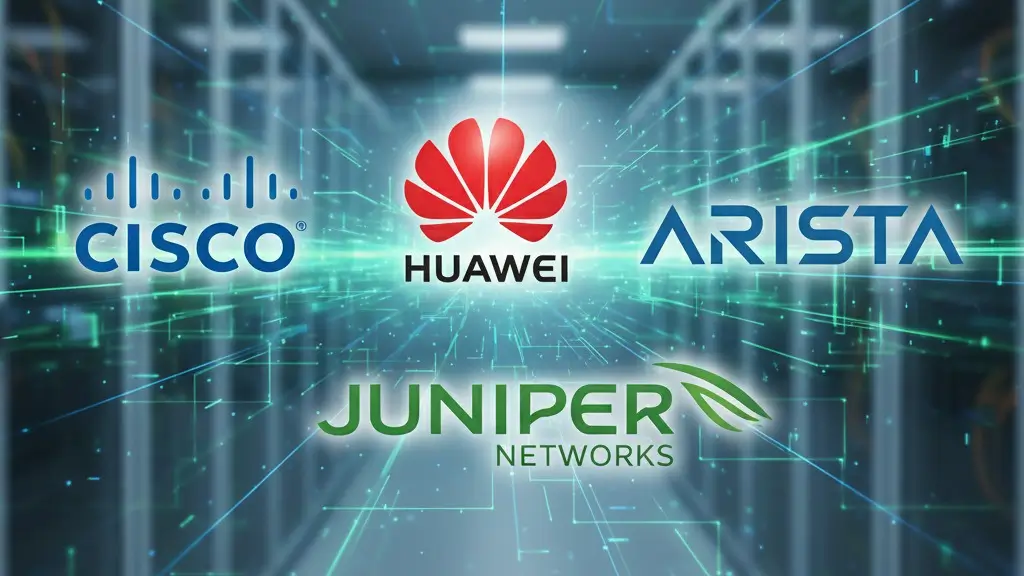
Key Differences Between AOC and DAC Cables
The distinction between AOC and DAC cables stems from their underlying technology—optical fiber versus copper—which drives differences in performance, cost, and use cases. Here’s a detailed comparison:
1. Transmission Medium
- AOC: Uses optical fiber to transmit data via light signals.
- DAC: Relies on copper wiring to carry electrical signals.
This core difference influences how each cable performs across various metrics.
2. Distance
- AOC: Capable of transmitting data over longer distances, typically up to 100 meters or more, depending on the technology and data rate.
- DAC: Limited to shorter distances—passive DAC reaches up to 7-10 meters, while active DAC can extend to 15 meters.
3. Data Rates
- AOC: Supports high data rates (e.g., 10G, 25G, 40G, 100G+) and excels at maintaining signal quality over long distances due to optical transmission.
- DAC: Also supports high data rates, but performance may degrade over longer lengths compared to AOC.
4. Interference
- AOC: Immune to electromagnetic interference (EMI) because it uses light, making it ideal for noisy environments with heavy electronic equipment.
- DAC: Susceptible to EMI due to its copper construction, which can impact signal quality in certain settings.
5. Power Consumption
- AOC: Consumes more power due to the active components required for signal conversion.
- DAC: Uses less power—passive DAC consumes almost none, while active DAC uses less than AOC.
6. Cost
- AOC: Generally more expensive, especially for longer lengths, due to the complexity of optical components.
- DAC: Typically cheaper, offering a budget-friendly option for short-range applications.
Here’s a quick summary in table form:
| Feature | AOC Cables | DAC Cables |
|---|---|---|
| Transmission | Optical fiber (light) | Copper (electrical) |
| Distance | Up to 100m+ | Up to 10m (passive), 15m (active) |
| Data Rates | High (10G-100G+) | High (10G-100G+) |
| Interference | Immune to EMI | Susceptible to EMI |
| Power Consumption | Higher | Lower (passive: negligible) |
| Cost | Higher | Lower |

Use Cases: When to Choose AOC or DAC
The right cable depends on your networking environment and requirements:
- Short-Distance Connections: For linking devices within the same rack or nearby racks, DAC cables shine due to their affordability and low power use. They’re perfect for connecting servers, switches, or storage units in close proximity.
- Long-Distance Connections: When spanning multiple racks or areas of a data center, AOC cables are the go-to choice, thanks to their ability to handle distances up to 100 meters without signal loss.
- EMI-Prone Areas: In environments with significant electromagnetic interference—like near power equipment—AOC cables provide reliable performance due to their EMI immunity.
- High-Density Setups: AOC cables, being lighter and more flexible, are easier to manage in cramped spaces with complex routing needs.
Real-World Scenarios
- Small Business: Setting up a compact network with servers and switches in one rack? DAC cables keep costs down and meet the short-distance needs.
- Large Corporation: Connecting data centers across a campus? AOC cables ensure high-speed, reliable transmission over longer distances.
Installation and Maintenance
- AOC: Lighter and more flexible, making them easier to route through tight spaces. However, care is needed to avoid damaging the fiber (e.g., no sharp bends). EMI isn’t a concern, simplifying placement.
- DAC: Bulkier and stiffer, especially at higher data rates, which can complicate installation in dense setups. Positioning must account for EMI sources, though they’re more durable against physical handling.
Both cable types require minimal maintenance once installed, but replacing a failed AOC cable can be pricier than swapping out a DAC cable, particularly for longer runs.
Future Trends
As demand grows for higher data rates and longer reaches, AOC cables may gain an edge. Advances in optical technology could lower their cost and power draw, broadening their appeal. Meanwhile, improvements in copper tech—like better shielding—might enhance DAC cables, though their short-range limitations will likely persist due to copper’s physical constraints.
Conclusion: Which Should You Choose?
In the battle of AOC vs DAC cables, there’s no universal winner—it’s about what fits your needs. AOC cables excel for long distances, high data rates, and EMI-heavy environments, making them ideal for sprawling data centers. DAC cables offer a cost-effective, low-power solution for short-range connections within racks.
Evaluate your network’s distance requirements, data rate needs, EMI exposure, and budget to make the right call. Whether you prioritize performance over distance or cost over complexity, understanding these differences ensures your infrastructure runs smoothly.
Thank you for reading. For more insights into networking solutions, visit Fibrecross.

What Is the Lifespan of an Optical Transceiver?
Learn the typical lifespan of optical transceiver modules like SFP+, QSFP+, QSFP28, QSFP-DD, OSFP. Discover factors that affect durability, signs of failure.

10G Transceivers: Types, Distances & Buying Guide
Learn the real-world differences between 10G transceiver types (SFP+ SR/LR/ER/ZR, copper/DAC/10GBASE-T), distances, use cases and buying tips.

What Is a BiDi Transceiver?
Discover what a BiDi transceiver is, how BiDi optical transceivers work, and why 800G BiDi is shaping the future of data center networking.

OEM vs. Third-Party Optical Transceivers: Which to Choose?
Make an informed choice between OEM and compatible optical transceivers. Practical guidance for IT managers on reliability, vendor support.

How Big Is the 800G Optical Transceiver Market in 2025?
The 2025 global 800G optical transceiver market size, key growth drivers, top players, and forecasts for this fast-growing multi-billion-dollar industry.

Inside the Structure of Active Optical Cables
Learn what makes active optical cables reliable: transceivers, diagnostics, fiber protection and installation tips. AOC cable overview for engineers.

